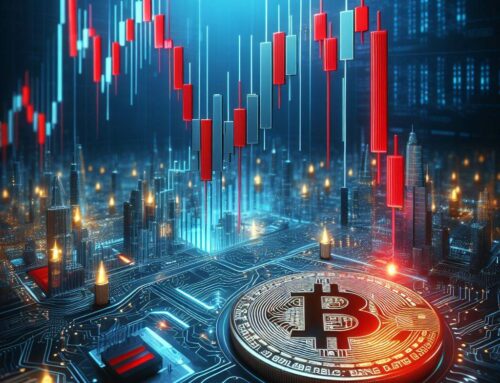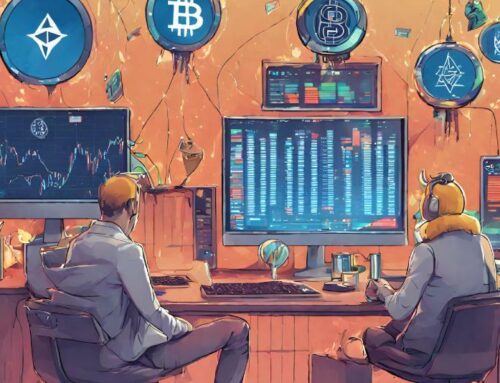Ripple vs. SEC: XRP Won Round 1, But The Road Ahead Remains Fraught
As the crypto sector celebrated the recent Ripple win against the SEC, few commented on the court’s finding that XRP sales to institutional investors did breach securities laws. Here, we examine where to next for this precedent-setting case.
XRP, the native asset tied to the Ripple ecosystem, is up 13.3% in the last 90 days. This price performance is particularly impressive because crypto’s benchmark assets, Bitcoin (BTC) and Ethereum (ETH), are down ~3.2% and 9.1% respectively over the same period.
The key to this price push was a major win for Ripple Labs, the issuer of XRP, in its ongoing legal case against the USA’s Securities and Exchange Commission (SEC).
The Ripple Story: From Founding to Present Leadership
Ripple is a payment company, with an attached network token that aims to compete with the cross-border banking payment protocol SWIFT. It was created in November 2012 by three founders; Arthur Britto, Chris Larsen, and Jed McCaleb, in collaboration with Ryan Fugger who began working on a payments protocol in 2004 called RipplePay.
Since 2015, Brad Garlinghouse has served as the Ripple Labs CEO, with David Schwartz serving as CTO since July 2018. Schwartz joined Ripple Labs in 2011 as chief cryptographer. The majority of the original team is no longer tied to the project.
Initially, 100 billion XRP were minted by the founders, with 80% of that supply held by the currently branded Ripple Labs, which was known at the time as “Ripple.” The XRP token would be a way to expand the ecosystem and allow users to more seamlessly interact with Ripple products.
The Lingering Question: Is XRP an Unregistered Security?
The elephant in the room for Ripple Labs continues to be whether or not the XRP token represents an unregistered security. When XRP was initially created, escrows managed by Ripple, owned a majority of tokens and controlled the majority flow. Many observers have said XRP was sold as an investment tied to the growth of Ripple and was controlled by a centralized operator. If this is proven true, then XRP would constitute an unregistered security.
Ripple argues that the payment network XRP is deployed on is decentralized, the token does not represent shares of Ripple, and the network would continue to exist if Ripple Labs did not.
Ripple Labs offers a suite of tools for enterprise and banking solutions, collectively known as RippleNet, including; xCurrent, xRapid, and xVia. xCurrent processes global bank-to-bank payments for customers and is analogous to SWIFT. xRapid, which went live in October 2018, sources on-demand liquidity through buying and selling XRP. xVia can be used to send unidirectional payments.
These services were then packaged into RippleNet. All banks that used xCurrent were on-boarded into the new RippleNet.
XRP functions as the native transaction token of the XRP Ledger. The XRP ledger functions like many other blockchains we are familiar with. It operates as a ledger of transactions, distributed across several unconnected, but incentive-aligned nodes that verify transactions. The XRP ledger has capabilities like instant cross-chain and fiat-to-crypto transactions that Ripple Labs uses. It is, however, a permissionless network that is open for anyone to transact and build with.
Source: Brave New Coin, XRPLX
What is noticeable on the 90-day price chart for XRP, is a sudden spike in prices around mid-July 2023. The price of XRP rose ~72.3% in just over a week – from US$0.47 to US$0.81 between July 12th and July 20th.
A Partial Victory: Judge Torres’s Ruling and its Impact
On Thursday the 13th of July, Judge Analisa Torres of the U.S. District Court for the Southern District of New York ruled that Ripple Labs did not violate federal securities laws by running the sale of XRP on public exchanges. This was viewed as a major win for the industry and a signal that XRP did indeed have a strong leg to stand on its case against the SEC. Judge Torres, however, did rule that private sales to institutional investors violated federal securities law. XRP bulls clearly viewed the partial victory as far more important than the partial loss.
SEC’s landmark legal action against Ripple Inc began almost 3 years ago. In a press release published on December 22nd, 2020, the SEC announced that it had filed an action against Ripple Labs Inc and two of its executives alleging that they raised over USD1.3 billion through an unregistered, ongoing digital asset securities offering.
The SEC alleges that Ripple has been raising funds through the sale of the unregistered security XRP since the beginning of 2013. The lawsuit filed by the SEC makes claims that Garlinghouse and Larsen "orchestrated these unlawful sales and personally profited by approximately $600 million from their unregistered sales of XRP". It also states that Ripple "received legal advice as early as 2012 that under certain circumstances XRP could be considered an “investment contract” and therefore a security under federal securities law.
The current definition of the term “investment contract” was originally established during the Howey decision and is used throughout US securities laws. The Howey test emerged as a landmark precedent following the case – Securities and Exchange Commission v. W. J. Howey Co (1946). In the end, the case went to the Supreme Court, which ruled that this specific offer of land sales and a service contract was an "investment contract" within the meaning of the Securities Act of 1933.
The judge who made the ruling said the legal definition, at the time, of an investment contract was vague and unclear. The ruling by the judge in 1946 stated, “…an investment contract, for the purposes of the Securities Act, means a contract, transaction or scheme whereby a person invests his money in a common enterprise and is led to expect profits solely from the efforts of the promoter or a third party…”
An investment contract under this definition, is an “investment of money” in a “common enterprise” with the “expectation of profits,” “solely through the efforts of another.”
Judge Torres holds the opinion that institutional sales of XRP _did _constitute investment contracts – meeting the requirements of the Howey Test. According to the judge, the programmatic sales and other distributions of XRP did not.
She explains in her ruling that XRP token "is not in and of itself a ‘contract, transaction [,] or scheme’ that embodies the Howey requirements of an investment contract." This finding, specifically, has strong implications for the wider digital asset community.
For the “programmatic sales”, Ripple Labs sold XRP tokens utilizing trading algorithms on digital asset exchanges via blind bid/ask transactions. As Ripple did not know the identity of the buyers on exchanges, and the purchasers did not know who they were buying the XRP tokens from, it could not be clearly established that there was an ”expectation of profits”, “solely from the efforts of another.
This is similar reasoning to why the charges against Garlinghouse and Larsen were rejected because they sold XRP tokens on exchanges without knowing the buyers, or the buyers knowing the sellers.
It was also claimed by the SEC that Ripple Labs made “other distributions”, these transactions included the distribution of XRP as payment for employee compensation and to third parties in exchange for services. The ‘Investment of money’ aspect of the Howey test is where this type of distribution failed to become an ‘investment contract’. The court stated that it did not find any evidence that Ripple funded itself with these ‘transfers’ or that it was even paid for them.
The “institutional sales” where, Ripple, through wholly owned subsidiaries, sold XRP directly to counterparties (primarily institutional buyers and hedge funds) pursuant to written contracts do, however, did meet Judge Torres’s interpretation of an investment contract. The approach of directly selling XRP to self-identifying individual investors, as an investment that would bring gains, in the judge’s eyes, separated this sales/distribution channel from the others cited.
Upcoming Deadlines: Ripple Labs’ Response and Potential Outcomes
The case is far from over and the SEC appears to be licking its wounds and preparing a strong appeal against Ripple Labs. This is likely a factor in XRP’s muted price performance in recent weeks, as the wider marketplace absorbs the fact that Ripple’s “win” is by no means the end of the game.
Judge Torres granted the SEC’s request for leave to file a motion to file an interlocutory appeal on the 17th of August. A day later the SEC asked for permission to appeal the Federal Judge’s ruling that the majority of the XRP sales cited by the SEC did not constitute unregistered securities sales.
Ripple Labs has until the 1st of September to file a response to the SEC’s motion. The securities agency will then have another week to reply to any response. If the SEC wins Judge Torres’ approval for interlocutory appeal, it will need to petition the Second Circuit Court of Appeals to take up the case.
An Uncertain Epilogue: Cautionary Tale or Startup Victory
The unfolding legal saga between Ripple Labs and the SEC represents a moment in history not only for Ripple but for the broader digital asset industry as a whole. The recent court decisions, which have differentiated the various types of XRP sales tied to the asset’s initial distribution, underscore the complexities involved in applying traditional securities law to a nascent class.
While Ripple’s partial victory offers a glimmer of optimism for other digital assets facing similar scrutiny, the impending appeal from the SEC reminds us that the final chapter in this story is yet to be written. Whether Ripple’s ongoing battle may ultimately to be a cautionary tale or a victory for start-ups being persecuted for strategically bootstrapping is still to be determined.
As the deadline for Ripple’s response to the SEC’s motion approaches, all eyes remain on the U.S. legal system, awaiting verdicts that could set lasting precedents for the future of digital currencies.
XRP’s price fluctuations, driven by decisions in this case, reveal that the market remains highly reactive, underscoring the weight of regulatory clarity in this arena.
Check out the latest BNC podcast for more plans on Ripple’s DeFi vision.

Don’t miss out – Find out more today




